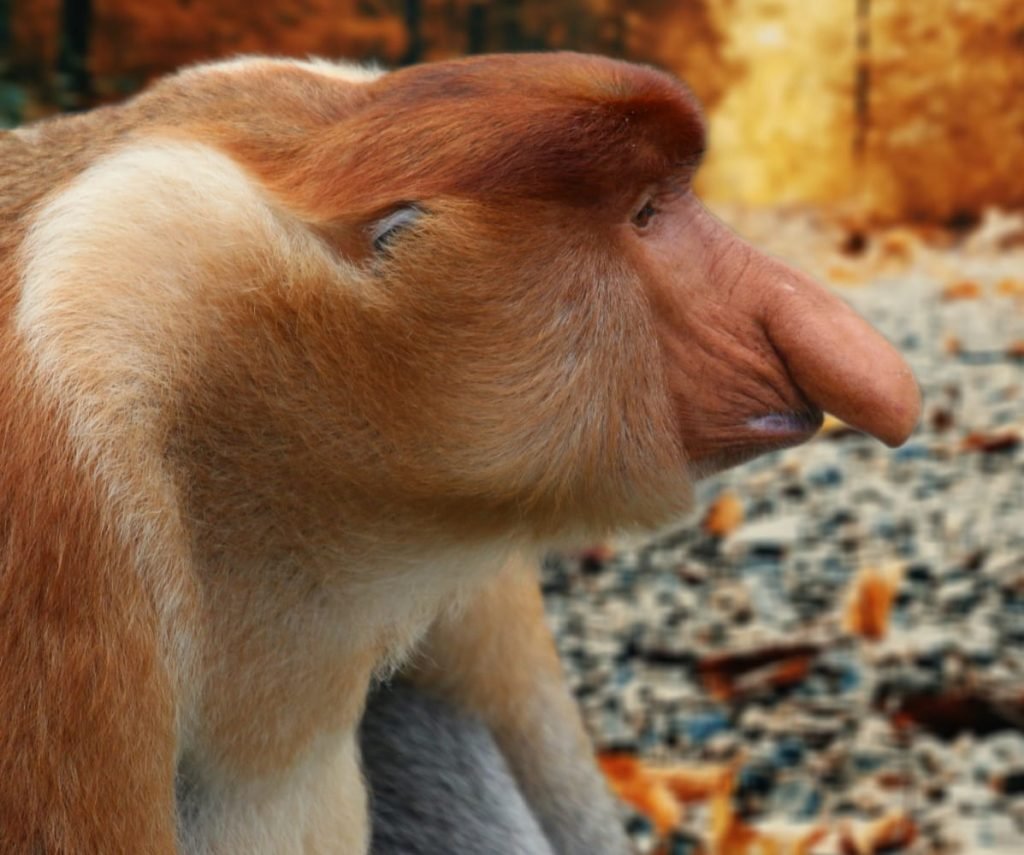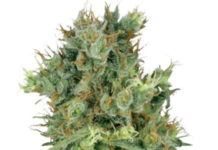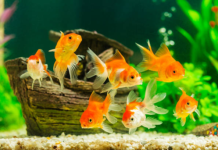Table of Contents
Introduction
The Proboscis monkey, also known as the monkey with big nose, is an intriguing primate native to the southeast Asian island of Borneo. With its distinct features, including a big nose, reddish-brown skin, and a long tail, the proboscis monkey captures the attention of researchers and nature enthusiasts alike. Its unique appearance and arboreal lifestyle make it a remarkable species worth exploring. In this article, we will delve into the captivating world of the proboscis monkey, uncovering its habitat, behavior, feeding habits, and the challenges it faces in its natural environment.
Habitat and Distribution: Where to Find the Proboscis Monkey in Borneo?
The proboscis monkey is endemic to the island of Borneo, primarily found in the coastal areas and mangrove forests of this lush Southeast Asian paradise. These monkeys have a particular affinity for mangrove habitats, as they provide abundant food and serve as a haven from predators. Mangroves offer a unique ecosystem with their intertwining network of trees and tidal influences, creating an ideal environment for the proboscis monkey’s arboreal lifestyle.
Mangrove Forests: The Preferred Abode of the Proboscis Monkey
Within the mangrove forests of Borneo, the proboscis monkey finds its preferred abode. These forests offer a diverse array of plant species, such as mangrove trees and nipa palms, which provide a great food source for the monkeys. The intricate root systems of mangroves also offer a complex network of branches and platforms for the proboscis monkey to navigate, allowing them to move with agility through the treetops. Furthermore, the dense foliage of mangroves provides essential cover from predators and offers a sense of security for these primates.
Arboreal Lifestyle: How The Monkey With Big Nose Navigates the Treetops?
As an arboreal species, the proboscis monkey spends most of its life in the trees. Its long, muscular tail stabilizes, allowing it to swing from branch to branch with remarkable agility. The monkeys have developed strong limbs and grasping hands and feet, enabling them to quickly climb and leap between trees. Their keen sense of balance and dexterity allows them to explore the complex vertical world of the forest canopy. By embracing an arboreal lifestyle, the proboscis monkey maximizes its access to food resources and minimizes the risk of encountering ground-dwelling predators.
Feeding Habits: Unraveling the Diet of the Proboscis Monkey
The proboscis monkey is primarily herbivorous, with its diet consisting mainly of leaves, fruits, and seeds. They are particularly fond of young leaves, which are more nutritious and easier to digest. Their unique digestive system has an enlarged stomach and specialized gut bacteria. Thus, allowing them to process their plant-based diet efficiently. Furthermore, their ability to ferment and break down high-fiber foliage enables them to extract essential nutrients. The proboscis monkey’s feeding habits play a vital role in shaping its habitat, as they disperse seeds while foraging, contributing to the forest’s ecosystem diversity. Understanding their dietary preferences provides insights into their ecological impact and their symbiotic relationship with the plants in their environment.
Read more: The Ultimate Guide To Finding The Best Dog Parks Near You
Social Structure: The Complex Society of Proboscis Monkey Troops
Proboscis monkeys live in groups known as troops, typically consisting of a dominant male, several females, and their offspring. The social structure within these troops is hierarchical, with the dominant male holding the highest rank. This dominant male has exclusive mating rights and protects the group from threats. The females form strong bonds with each other and their young, engaging in grooming and cooperative parenting. Within the troop, there is a complex system of communication involving vocalizations, gestures, and facial expressions, which helps maintain social harmony and coordinate group activities. Exploring the intricacies of proboscis monkey social structure provides valuable insights into their behavior, reproductive strategies, and overall dynamics within their community.
Mating and Reproduction: Insights into the Breeding Behavior of Proboscis Monkeys
Mating in proboscis monkeys centers around the dominant male, who has exclusive access to females within his troop. During the breeding season, the male competes with other males to mate. This competition often involves elaborate vocalizations and physical displays to assert dominance and attract females. Once a female is receptive, mating occurs, leading to a gestation period of approximately 166 to 200 days. After birth, the female is primarily responsible for caring for the offspring. However, other members of the troop, particularly related females, may assist in raising and protecting the young. Understanding the mating and reproductive behavior of proboscis monkey, monkey with big nose, sheds light on their evolutionary strategies, population dynamics, and the unique dynamics that shape their troop structures.
Communication: Vocalizations and Gestures in Proboscis Monkey Communication
Proboscis monkeys employ a range of vocalizations and gestures to communicate with their troops. Vocalizations include loud honks, roars, and grunts that serve various purposes, such as establishing territory, warning of potential danger, or expressing aggression. Additionally, males emit characteristic loud calls known as “long calls,” which may function as a display of dominance and serve to attract females. Nonverbal communication involves facial expressions, such as wide-open mouths or exaggerated yawns, body postures, and gestures. These communication signals are crucial in maintaining social cohesion, resolving conflicts, and coordinating group activities. Studying the intricate communication system of proboscis monkeys enhances our understanding of their social dynamics and the complexities of primate communication.
Parental Care: The Role of Proboscis Monkey Mothers and Fathers: The Monkey With Big Nose
Within proboscis monkey troops, mothers and fathers play essential roles in parental care. After birth, the mother provides primary care for the young, ensuring their safety and nourishment. The bond between mother and offspring is strong, and she carries the infant for several months, nursing and grooming them. Other females within the troop often assist in caring for and protecting the young, exhibiting cooperative parenting behavior. Although not directly involved in caregiving, the dominant male contributes to troop defense and protection, ensuring the offspring’s safety. Understanding the dynamics of parental care in proboscis monkeys provides insights into the development and survival of their young and the cooperative behaviors that strengthen their troop structure.
Threats and Conservation Status: Challenges Facing the Proboscis Monkey Population

The proboscis monkey population faces several threats that impact its conservation status. Habitat loss due to deforestation, particularly the clearing of mangrove forests for agriculture and development, poses a significant risk to their survival. Fragmentation of their habitat disrupts their natural range and limits their access to resources. Illegal hunting and poaching for bushmeat and the exotic pet trade further contribute to declining numbers. The proboscis monkey is listed as endangered on the IUCN Red List of Threatened Species, highlighting the urgent need for conservation efforts to protect their remaining populations. Understanding their challenges helps raise awareness and promotes conservation initiatives to preserve their habitat and ensure their long-term survival.
Human Interaction: The Impact of Human Activities on Proboscis Monkey(The Monkey With Big Nose) Habitats
Human activities have a profound impact on proboscis monkey habitats. Rapid urbanization, agriculture, and industrial development result in clearing vast areas of mangrove forests, displacing these primates from their natural homes. Pollution from agricultural runoff and industrial waste can contaminate their water sources, affecting their health and overall well-being. Encroachment of human settlements and infrastructure development further encroaches upon their territories, increasing human-wildlife conflicts. Understanding the implications of human interaction with proboscis monkeys sheds light on the need for sustainable practices, responsible land use, and conservation planning that considers the welfare of humans and these unique primate species.
Conservation Efforts: Initiatives to Protect and Preserve the Proboscis Monkey
Conservation organizations, researchers, and local communities are actively working to protect and preserve the proboscis monkey. These areas provide essential habitats and safeguards against further habitat destruction. Collaborative research projects focus on understanding their behavior, ecology, and population dynamics to inform conservation strategies. Education and awareness programs aim to engage local communities, raise awareness about the importance of proboscis monkey conservation, and promote sustainable practices. Efforts to combat illegal hunting and pet trade are also crucial in safeguarding their populations. By highlighting successful conservation efforts, we can inspire collective action and foster a greater responsibility toward protecting these unique primates.
Success Stories: Conservation Projects that Have Benefited Proboscis Monkey
Several conservation projects have made significant strides in protecting and benefiting proboscis monkey populations. Examples include the establishment of the Lower Kinabatangan Wildlife Sanctuary in Sabah, Malaysia, which provides a protected area for these primates and other wildlife species. The reintroduction of proboscis monkeys into suitable habitats has been successful in some areas, helping to restore populations and enhance genetic diversity. Collaborative efforts involving local communities, government agencies, and conservation organizations have played a vital role in these successes. By highlighting these success stories, we can celebrate achievements in proboscis monkey conservation and inspire further initiatives to protect and restore their populations across their range.
Some Quick Facts
- Scientific Name: The proboscis monkey, scientifically known as Nasalis larvatus, is an arboreal primate species endemic to Borneo.
- Size and Weight: Adult males weigh around 45 lbs, while females are comparatively smaller, weighing approximately 19 lbs.
- Conservation Status: The proboscis monkey is listed as endangered, decreasing its population over time.
- Diet: These primates are herbivorous, relying on a diet consisting mainly of leaves, fruits, and seeds.
- Lifespan: The Monkey With Big Nose has an average life expectancy of around 20 years.
- Family and Infraorder: They belong to the family Cercopithecidae and the infraorder Simiiformes, which includes Old World monkeys and apes.
- Physical Features: Proboscis monkeys possess distinct physical characteristics, including a vast nose, reddish-brown skin color, and a long tail.
- Habitat: They are found primarily in Borneo’s mangrove forests and coastal areas, utilizing their unique arboreal adaptations to navigate the treetops.
- Social Structure: The Monkey With Big Nose live in troops, which consist of a dominant male, several females, and their offspring, exhibiting a hierarchical social structure.
- Communication: Vocalizations and gestures are crucial in proboscis monkey communication, facilitating social interactions within the troop.
- Parental Care: Both mothers and fathers play important roles in caring for monkey offspring, ensuring their safety and well-being.
- Threats: The proboscis monkey faces numerous threats, including habitat loss due to deforestation, illegal hunting, and the pet trade.
- Human Impact: Human activities such as urbanization and infrastructure development significantly impact proboscis monkey habitats.
- Conservation Efforts: Various conservation initiatives are underway to protect and preserve proboscis monkeys, including establishing protected areas and educational programs.
- Importance in Ecosystem: Proboscis monkeys play a vital role in Borneo’s ecosystem by dispersing seeds, contributing to forest diversity, and serving as indicators of environmental health.
Conclusion
The proboscis monkey stands out among primates due to its remarkable physical features. Its most notable attribute is its elongated, fleshy nose, which can reach great lengths in adult males. While the purpose of such a conspicuous nose remains debated among scientists, it is believed to play a role in attracting mates and regulating body temperature. Additionally, the proboscis monkey’s reddish-brown skin, which intensifies during periods of excitement or stress, further adds to its distinct appearance. With a long, muscular tail that is a balancing tool while navigating treetops, the proboscis monkey(The Monkey With Big Nose) is a marvel of adaptation. By understanding the physical characteristics of the proboscis monkey, we gain valuable insights into its evolutionary journey and the role these traits play in its survival within the dense mangrove forests of Borneo.
Apart from this, if you are interested to know more about How to draw a monkey?, then please visit our Entertainment category.
FAQs (Frequently Asked Questions)
The proboscis monkey is scientifically known as Nasalis larvatus.
Adult male proboscis monkeys weigh around 45 lbs.
The proboscis monkey is herbivorous.



























